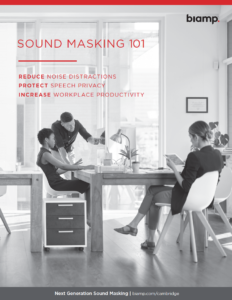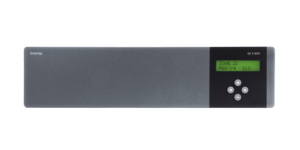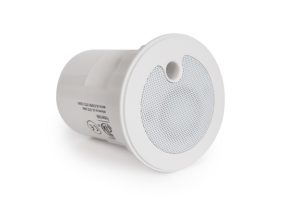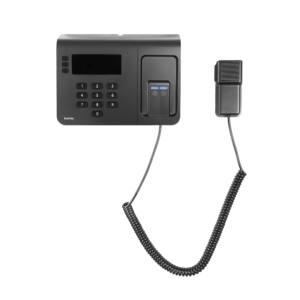Buildings magazine did a feature article in their August issue titled Listen Up: Fix Your Acoustic Problems in 4 Steps. The article did a great job articulating the workplace speech privacy crisis and how it’s damaging to employee productivity and satisfaction. Several solutions to the problem are discussed, including adding a sound masking system.
The article begins by explaining how a lack of workplace speech privacy is actually detrimental to productivity, citing a Center for the Built Environment Study that found that 60% of office workers in cubicles say that acoustics directly interferes with their job performance. One stat I was not familiar with is that apparently office productivity can drop as much as 66% when employees who are trying to read or write are disturbed by nearby conversations!
Since it’s been proven that bad acoustics can result in lost productivity, it follows that improving those acoustics could result in measurable productivity gains. Our own sound masking ROI calculator plays with that notion by estimating the real dollars and cents impact for companies that install QtPro to mitigate excessive office speech distractions, assuming only a modest 3% productivity gain.
The article goes on to explain methods that building managers can make to mitigate workplace noise distractions including hiring an acoustical consultant during the building phase, investing in cutting edge ceiling titles, or adding better blocking materials. While adding ceiling clouds, wall modules, or walls that go all the way to the ceiling deck might help towards creating an acoustically comfortable environment, adding these materials to an office space can be an expensive and sometimes impractical endeavor. In fact, by the time many facility managers realize their office has a noise problem, the building has already been built and a costly acoustical retrofit is out of the question.
Sound masking provides a low impact, relatively inexpensive solution to the problem. The article mentions that sound masking is a “good option” but doesn’t delve much into how it works. Sound masking works by adding an engineered sound, similar to the sound of airflow but specifically tuned to mask the sound of human speech, to a workplace. The introduced sound covers up excess speech noise in an environment, making speech at distances from 15-100 feet away much less intelligible, and thus less distracting. Sound masking systems are typically much less expensive and easier to have installed than many sound deadening materials.
This isn’t to say that sound masking is the only way to make workplaces more comfortable, but it’s an essential, affordable tool for helping builders design acoustically comfortable environments without sacrificing aesthetics.





